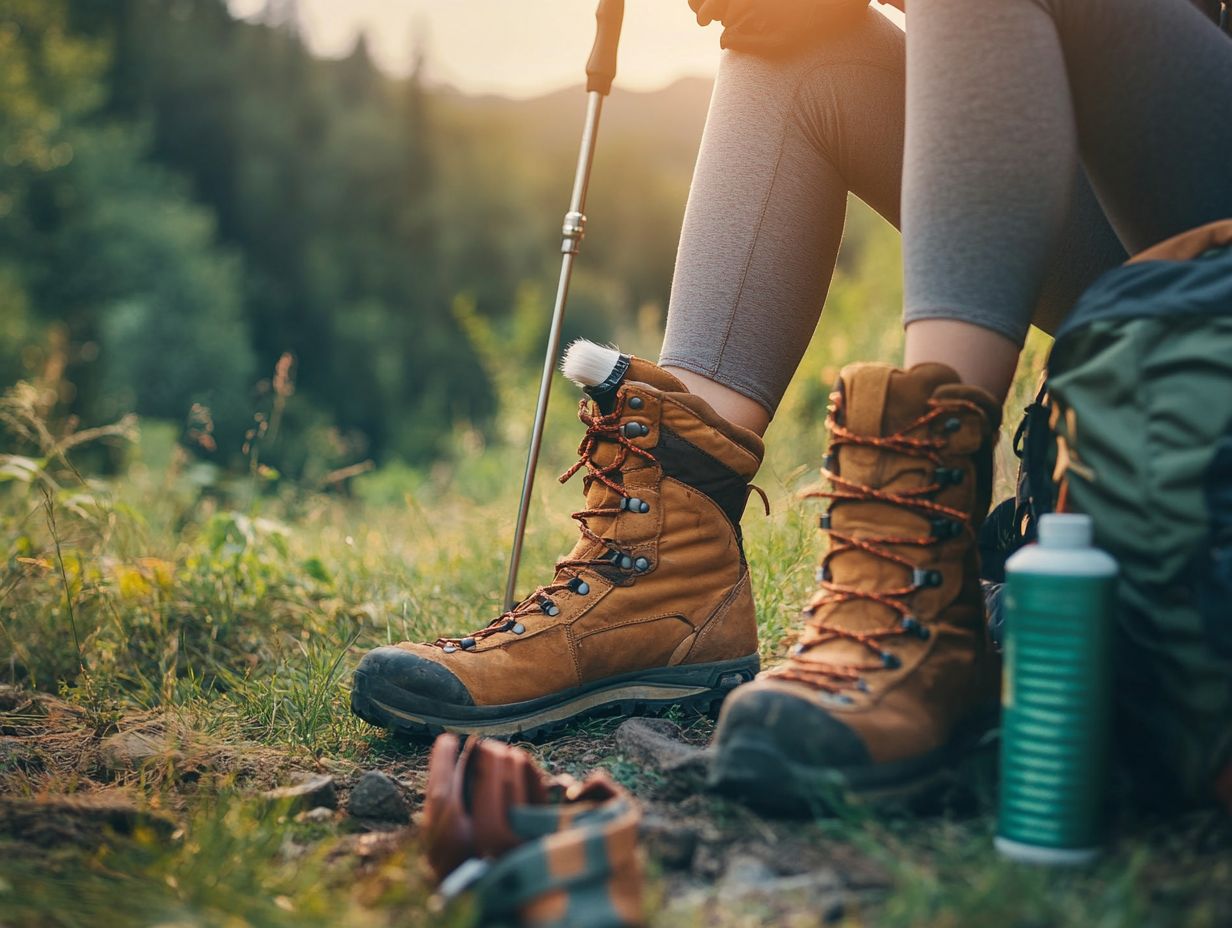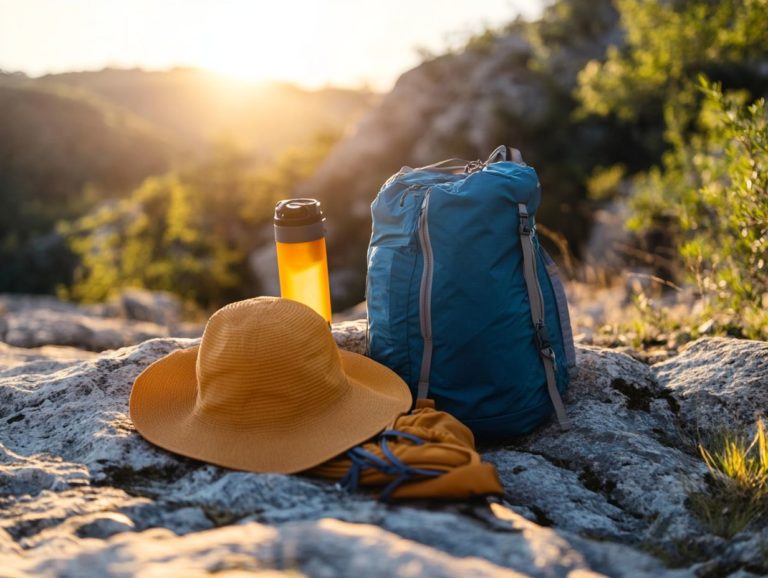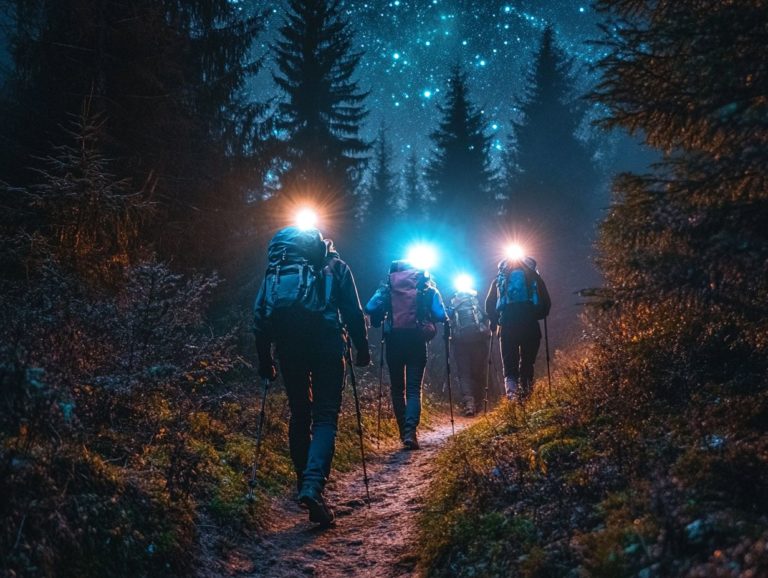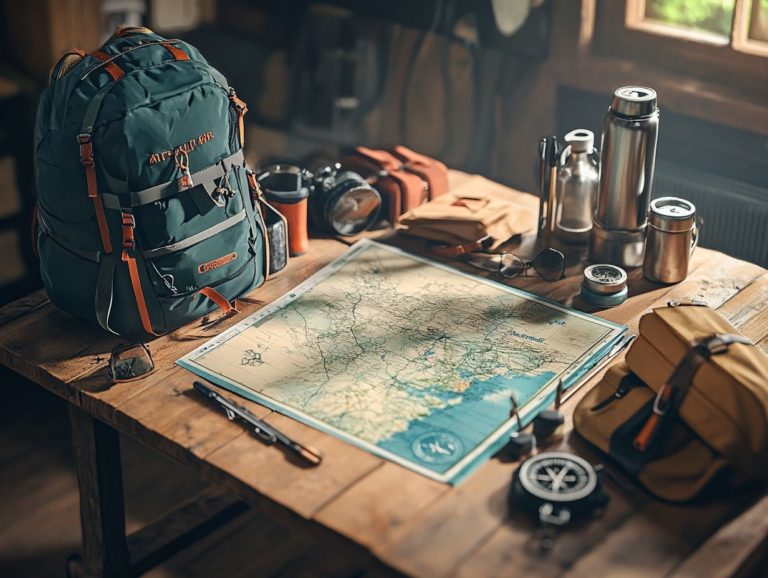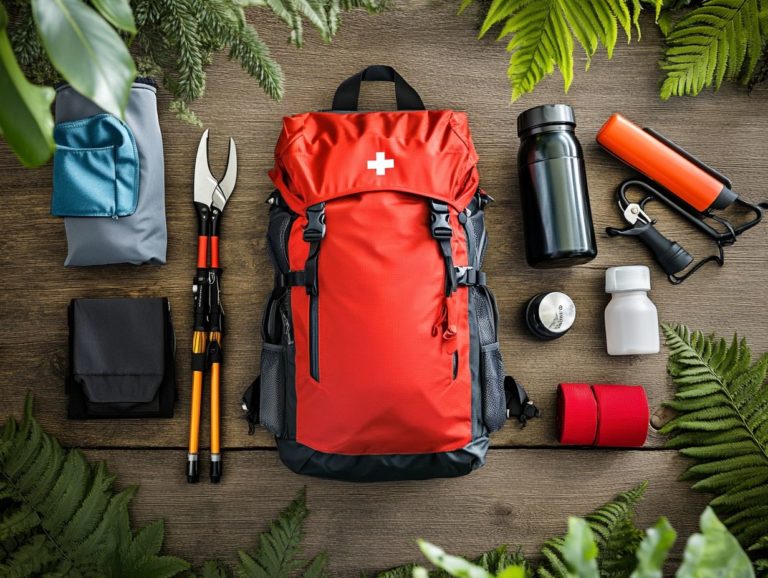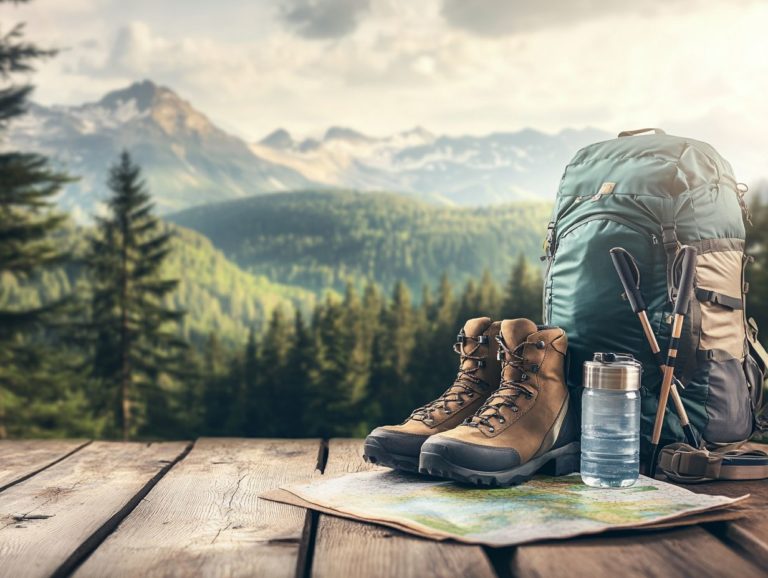How to Maintain Your Hiking Gear
Properly maintaining your hiking gear is essential for ensuring its longevity and performance, especially when considering various outdoor adventures.
Whether you re a seasoned trekker or a weekend warrior, knowing how to clean, dry, store, and repair your equipment can truly enhance your experience on the trail. This ensures both comfort and safety.
This guide will walk you through essential techniques tailored for various materials. You’ll learn best practices for long-term storage and insights on when to repair versus replace your gear. We’ll also cover essential cleaning products and maintenance techniques. You ll discover must-have tools for maintenance, too!
You’ll find specific tips for maintaining footwear, clothing, backpacks, and more. This includes how to treat waterproof gear and fabrics, all at your fingertips.
Prepare to keep your gear in peak condition for every adventure that lies ahead!
Contents
Key Takeaways:
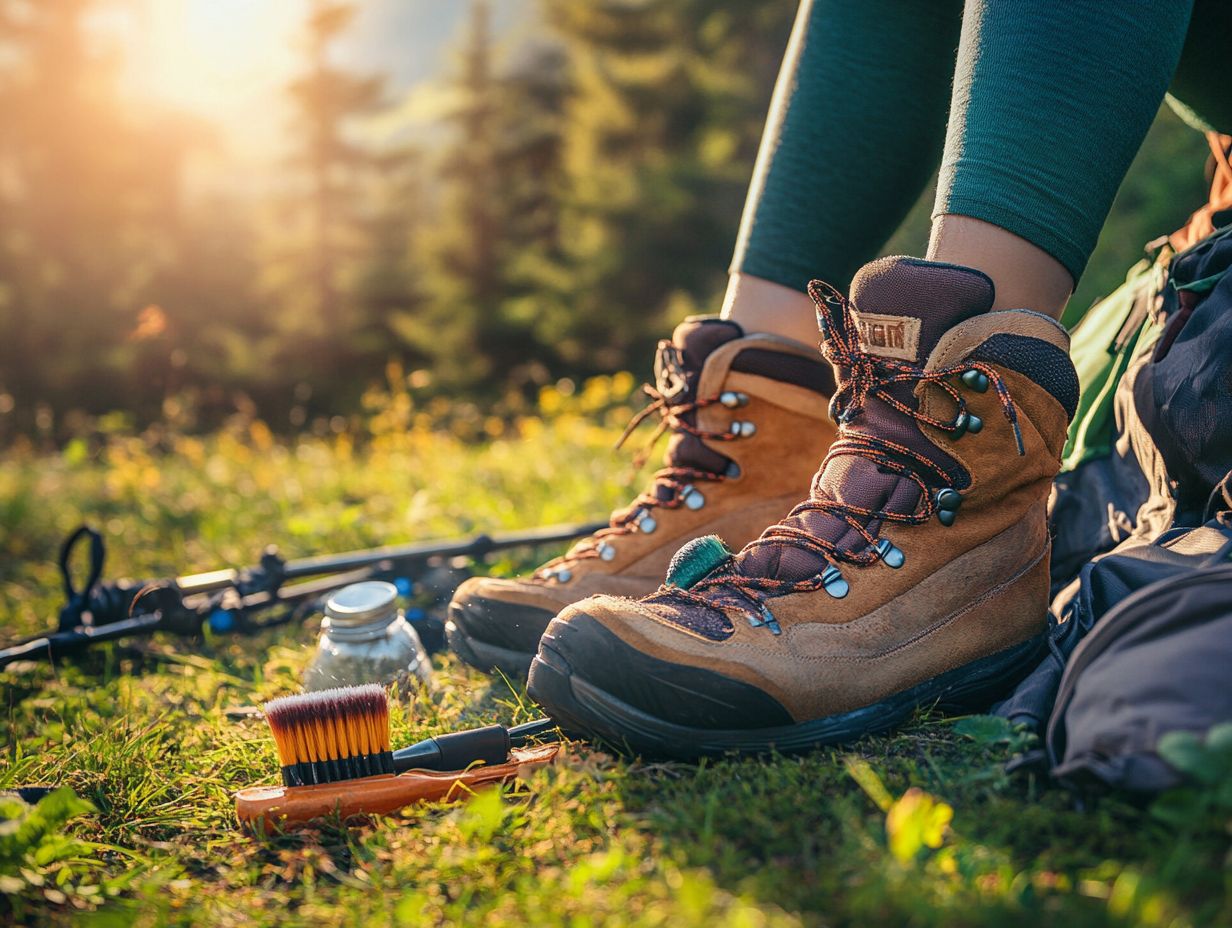
- Regularly cleaning and drying your hiking gear keeps it in good condition and extends its lifespan. Use proper techniques for different materials, such as hand-washing delicate fabrics and air-drying waterproof gear.
- Storing your gear properly, especially for long-term storage, is crucial for maintaining its quality. Store it in a dry, cool place, avoid direct sunlight, and use breathable storage bags.
- Knowing when to repair or replace your gear is important to prevent safety risks on the trail. Inspect your gear regularly and consider functionality and wear and tear when making your decision.
Why is it Important?
Maintaining your hiking gear goes beyond cleanliness; it significantly influences your safety, comfort, and overall experience in the great outdoors. Regular upkeep ensures that your equipment ranging from sleeping bags to backpacks remains robust and functional. This allows you to fully immerse yourself in your adventures without the looming threat of gear failure.
Taking time to care for your gear enhances hygiene and optimizes the performance of your waterproof products, which are designed to shield you from the elements. Thus, thorough cleaning and maintenance become essential practices for anyone passionate about outdoor exploration.
Cleaning and Drying Your Gear
Properly cleaning and drying your gear is essential for extending its lifespan and ensuring optimal performance, particularly after an outdoor adventure where dirt and moisture abound. By adopting a consistent maintenance routine for your camping equipment, such as tents and hiking boots, you can effectively eliminate dirt and moisture.
This proactive approach preserves your gear and prevents long-term damage, allowing you to fully enjoy your next adventure with peace of mind.
Proper Techniques for Different Materials
Different materials require specific cleaning techniques to maintain their performance and durability. For instance, waterproof fabrics need special care to preserve their water-repellent coating. Be sure to follow the manufacturers’ instructions for each type of gear, including tents and sleeping bags, to ensure that the materials retain their integrity over time.
For synthetic fabrics, using a mild detergent and cold water during washing can help you avoid damage and color fading. To care for down garments, a down-specific cleaner is essential to keep their loft and insulation properties intact. Avoid using fabric softeners, as they can clog the fibers and reduce breathability. If you have water-repellent items, maintaining that repellency often requires reapplying a spray-on treatment after several washes.
Disregarding these care guidelines jeopardizes your gear’s integrity and can lead to costly replacements or diminish your outdoor experiences.
Don’t wait any longer start maintaining your gear today for a safer and more enjoyable outdoor adventure!
Storing Your Gear
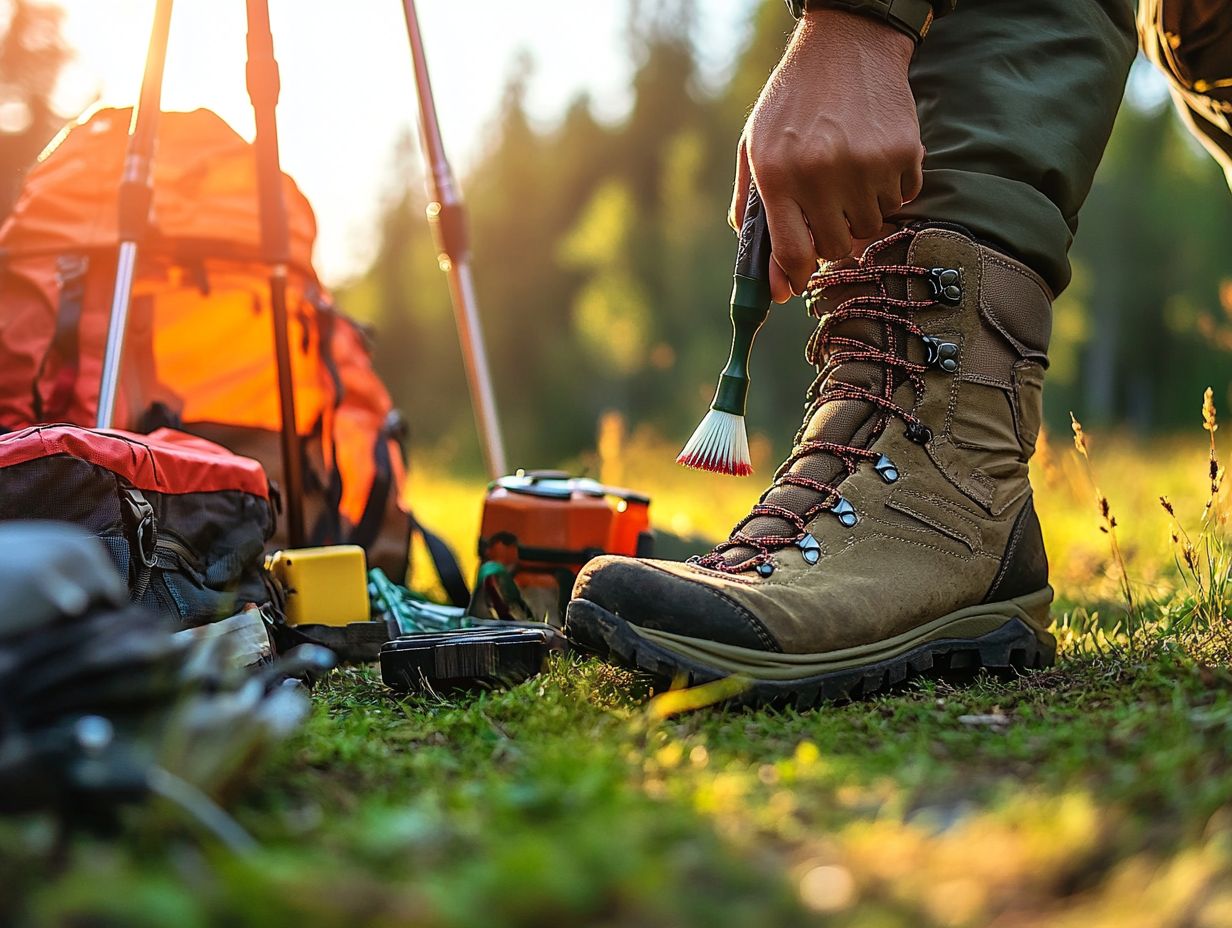
Storing gear correctly is crucial for keeping it in great shape. Protect your equipment from moisture, dirt, and damage by storing hiking boots in a dry place and sleeping bags in breathable bags.
Best Practices for Long-Term Storage
Long-term storage practices go beyond just cleaning. Store your items in conditions that minimize moisture and maximize safety.
Keep tent poles separate and ensure your hiking boots are completely dry. This proactive approach significantly reduces wear and tear on your equipment.
Using breathable storage bags for sleeping bags effectively prevents mildew. Stash cooking utensils in airtight containers to protect against rust and corrosion.
Find a cool, dry place for your gear, away from direct sunlight. Prolonged exposure can degrade materials over time.
Regularly check your equipment for signs of wear or damage. Addressing small issues can extend the lifespan of your gear, making it a worthwhile investment.
By implementing these methods, you can keep your outdoor equipment in optimal condition, ensuring safety and performance during future hikes and camping trips.
Repairing and Replacing Gear
Understanding when to repair versus replace your gear can save you both money and ensure you have reliable equipment for your hiking and camping adventures.
Regular maintenance checks help identify areas of wear on your hiking equipment that might not need a full replacement. For example, applying seam sealer to your tent or patching a down sleeping bag can significantly extend their lifespan without hefty investments.
When to Repair vs. Replace
Deciding whether to repair or replace your gear often comes down to the extent of the damage and repair costs compared to investing in new equipment.
For instance, repairing a high-end tent can be a smart move due to its durability, while a low-cost alternative might be better off replaced. Regular maintenance plays a crucial role in these decisions.
Consider a high-quality backpack with a minor tear. Investing in a skilled repair can extend its lifespan, offering years of reliable service for a modest expense.
In contrast, a basic, inexpensive sleeping bag showing excessive wear may not be worth the repair costs. The time and resources spent on fixing it could be better allocated toward acquiring a more durable replacement.
The original quality of your gear heavily influences these choices. Items made from high-grade materials often provide greater long-term value when restored, while lower-quality items can be a financial drain.
Assess factors like maintenance costs against the expected lifespan of both repaired and new gear to make informed investment decisions.
Essential Maintenance Tools
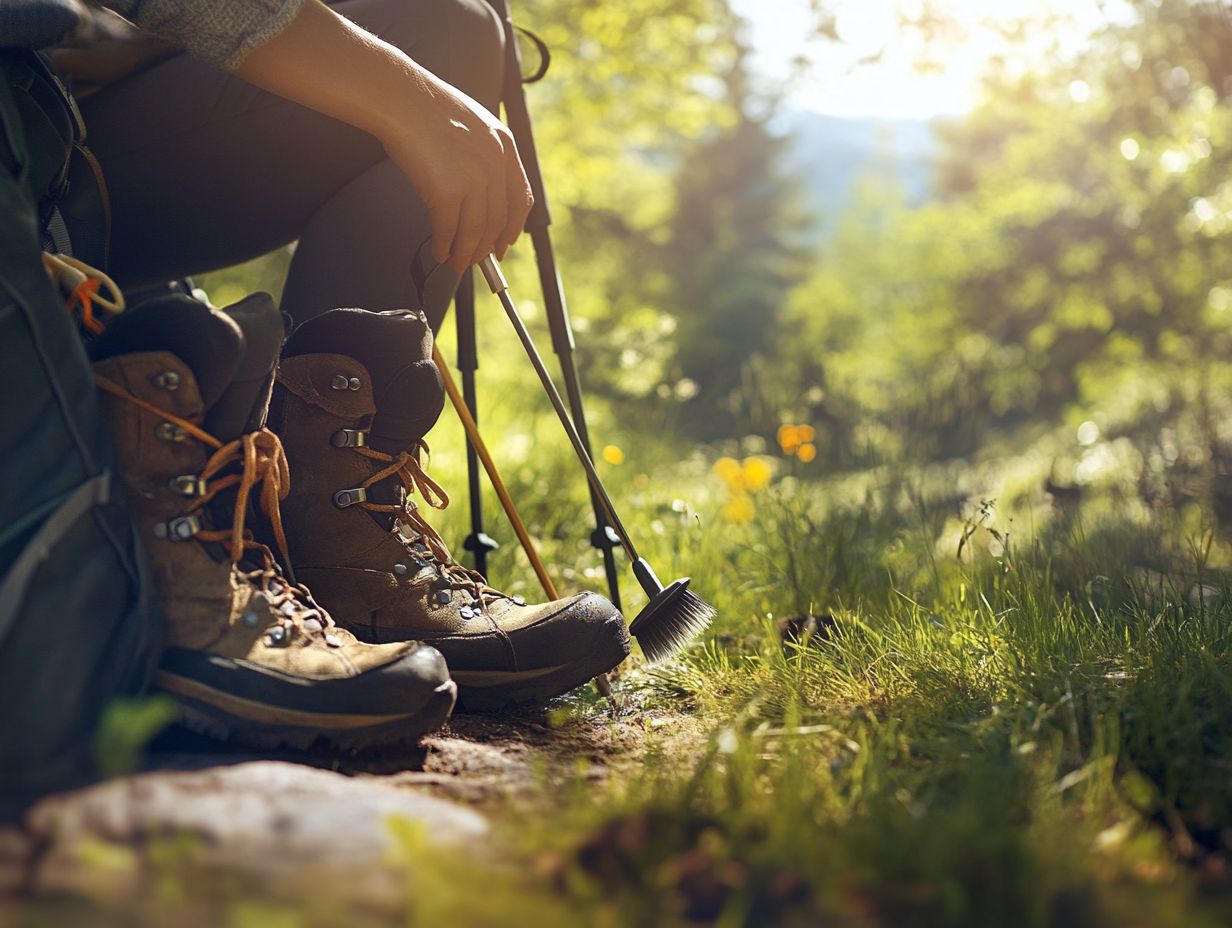
Equipping yourself with the right maintenance tools, including a first aid kit, can enhance the care and longevity of your outdoor gear.
A well-curated cleaning kit and reliable repair tools are essential for safeguarding your investment.
With items like seam sealers, silicone patches, and Nikwax specialized cleaning products, you ll be ready to efficiently address everything from stubborn dirt buildup to minor damages.
Start organizing your gear today for a hassle-free adventure tomorrow!
Must-Have Items for Gear Maintenance
A comprehensive gear maintenance kit should be your go-to companion. It should feature essentials like silicone patches for waterproofing, seam sealers for tents, and a first aid kit to ensure safety during your adventures.
With these tools, you’re not just prepared; you’re ready to tackle any situation that may arise. They are vital for keeping your gear performing at its best and ensuring your safety out there.
Consider adding multi-tools to your gear for those surprise adjustments on the fly, along with waterproof storage bags to keep everything organized and dry, including your water bottles and cooking utensils.
Cleaning solutions specifically designed for outdoor fabrics are essential for prolonging the lifespan of your gear. A set of spare batteries for your electronic devices will guarantee that your tech stays functional throughout your trips.
Don t overlook sturdy repair tape for quick fixes on torn equipment or a pump for inflatables like mattresses and kayaks. Get these essential tools to boost your gear s durability and enjoy your adventures worry-free!
Tips for Maintaining Specific Gear
Maintaining your gear be it footwear, clothing, or backpacks requires a thoughtful approach. You need to care for your gear to keep it comfortable and long-lasting.
For instance, regularly cleaning your hiking boots and applying appropriate fabric treatments can significantly enhance their performance and extend their lifespan. Additionally, knowing how to store your camping gear properly allows you to enjoy your adventures with confidence.
Footwear, Clothing, Backpacks, and Other Gear
Maintaining your footwear, clothing, backpacks, and other gear is essential for comfort, performance, and longevity especially in outdoor conditions where dirt and moisture are constant companions. Regular cleaning and waterproofing treatments are key to keeping these crucial items in top shape.
To achieve the best results, consider using specialized cleaning solutions tailored to the materials at hand, whether you re dealing with leather, synthetic fabrics, or canvas. Applying waterproofing sprays or treatments can significantly bolster the durability of your gear, preventing water from seeping through and causing damage.
It’s equally important to routinely check for any signs of wear and tear, such as frayed seams or worn-out soles. Addressing these issues promptly can save you from bigger headaches down the line. By weaving these maintenance strategies into your regular routine, you can ensure your gear remains reliable and adventure-ready at all times.
Frequently Asked Questions
How do I properly clean my hiking gear?
To maintain your hiking gear, regularly clean it after each use. This includes wiping down your backpack, washing your clothes and gear, and cleaning your water bottles and hydration pack. Use mild soap and warm water to clean, and avoid harsh chemicals that can damage the materials.
What is the best way to store my hiking gear?
Store your hiking gear properly when not in use to help it last longer. Make sure your gear is completely dry before storing it in a cool, dry place. Avoid storing it in direct sunlight or damp areas, as this can cause mold or mildew to grow.
How often should I replace my hiking gear?
The lifespan of your hiking gear depends on the frequency of use and the quality of the materials. Regularly check your gear for any signs of wear and tear. As a general rule, hiking shoes should be replaced every 500 miles and tents every 3-4 years.
What can I do to prevent damage to my hiking gear?
To prevent damage to your hiking gear, use it for its intended purpose and follow the manufacturer’s instructions. Avoid overpacking your backpack and be mindful of any sharp objects that could puncture your gear. Also, try to avoid extreme weather conditions that can cause wear and tear.
How do I maintain my hiking boots?
Your hiking boots are an essential piece of gear. Taking care of them properly will ensure they last.
After each hike, remove any dirt or debris. Let the boots air dry.
Use a waterproofing spray to protect against moisture. Replace the insoles when they start to wear down.
What should I do if my hiking gear gets damaged?
If your hiking gear gets damaged, stay calm and take action! Many outdoor gear companies offer repair services.
You can also try fixing it yourself using a repair kit (a set of tools and materials for fixing gear). If the damage is too severe, consider replacing the item.
Properly dispose of any damaged gear to protect the environment.

